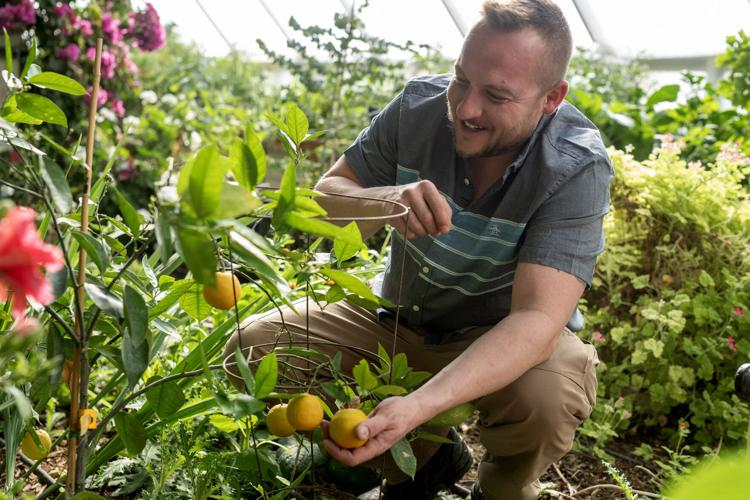
Sopher says that he is growing these crops for his family's consumption and he wants to be self-sufficient. THE CANADIAN PRESS/Liam Richards
In a time when climate change is rapidly altering weather patterns, Canada's agricultural landscape is undergoing significant transformations. Farmers across the country are grappling with shifting norms and exploring new possibilities as they adapt to the changing environment.
One notable change is the delayed onset of winter frost in Ontario, allowing farmers to experiment with planting crops later in the year. Jennifer Doelman, a farmer from Renfrew County, has seized this opportunity to grow winter canola alongside traditional spring canola. This adaptation has spread out farmers' workload and risks, providing a buffer against the uncertainties of weather patterns.
Similarly, berry farmers in British Columbia are taking their crops indoors to shield them from extreme heat and floods. Researchers at Simon Fraser University are leading the charge in demonstrating how blueberries can be grown year-round in controlled indoor environments. This approach not only ensures fresher and better-tasting berries but also reduces water usage, minimizes pesticide use, and lowers carbon footprint.
In Nova Scotia, Matthew Roy's Coastal Grove Farm is successfully cultivating saffron, a spice traditionally grown in warmer regions like Iran and India. Roy recognized the potential of saffron cultivation in Nova Scotia due to the changing climate, which has resulted in warmer temperatures. Despite facing challenges like extreme rainfall, Roy remains optimistic about the future of saffron farming in the region.
Even in the heart of the Canadian Prairies, farmers like Dean Sopher are challenging conventional wisdom by growing tropical fruits like bananas, oranges, and lemons in greenhouses. Sopher's innovative approach underscores the resilience of farmers in adapting to climate change and exploring new possibilities for agricultural production.
However, these adaptations are not without their challenges. Climate change brings with it a host of uncertainties, including extreme weather events like droughts, floods, and heatwaves. These disruptions pose significant risks to agricultural productivity and livelihoods, requiring farmers to adopt innovative strategies to mitigate their impact.
Researchers emphasize the importance of resilience and flexibility in the face of climate change. Strategies like zero tillage, crop rotation, and drought-resistant crop varieties can help farmers adapt to changing conditions and maintain agricultural productivity.
Overall, Canada's agricultural sector is in a state of flux as farmers navigate the complexities of climate change. While the road ahead may be fraught with challenges, there is also room for innovation and adaptation as farmers strive to secure a sustainable future for Canadian agriculture.















